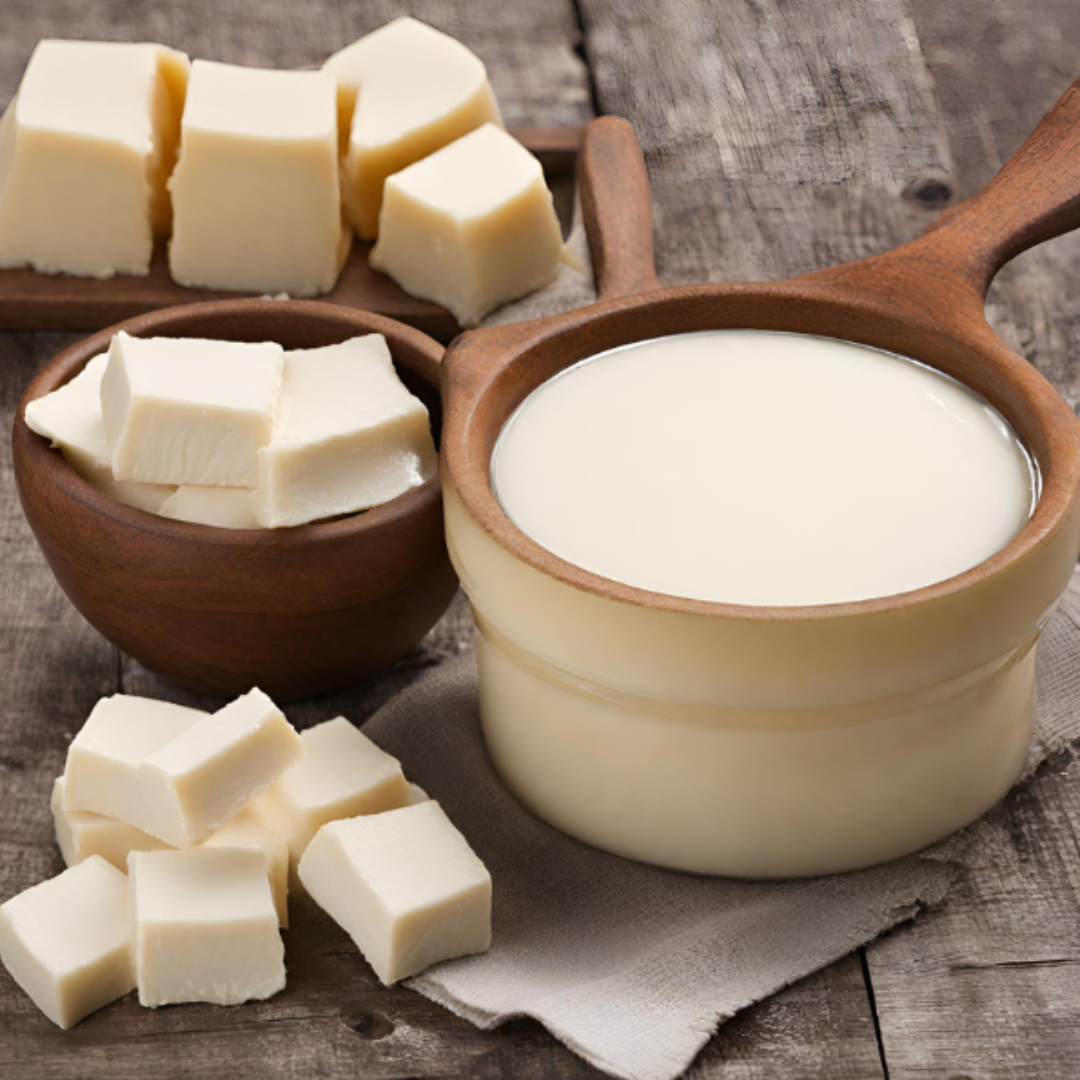Why Did We Stop Using Tallow? Unveiling the Story Behind the Shift in Cooking and Skincare Trends

Howdy, inquisitive minds and history enthusiasts!
Today, let's take a leisurely stroll down memory lane and delve deep into a subject that's as captivating as it is mouth-watering: Why did we cease using tallow? Once upon a time, tallow held a place of honour in both kitchens and skincare routines, but somewhere along the timeline, its popularity waned. We're embarking on a journey through time to uncover the reasons behind this shift, exploring its legacy in both culinary and skincare realms, and even catching a glimpse of its modern-day revival. Ready for a delectable dose of history? Let's set forth on this flavoursome voyage!
A Glimpse into Tallow's Glorious Past
Cast your thoughts back, and you'll find that tallow was the cooking fat that took centre stage. It bestowed its distinct flavour upon a variety of dishes, boasting a high smoke point and a dense consistency that rendered it a culinary chameleon – from sizzling up feasts to roasting with finesse. And let's not forget the richness it imparted to both sweet and savoury delights!

Picture this: historical kitchens resonating with the crackling sound of tallow. This wasn't just any cooking fat; it was the cooking fat. Tallow reigned supreme in the culinary landscape, gracing both home kitchens and bustling eateries. But its influence extended beyond food – tallow played an essential role in industrial applications such as candle-making, soap production, and even serving as a dependable lubricant.

The Evolution in Culinary Use of Tallow
Now, let's delve into the transition that nudged Tallow into the background. This transformation occurred gradually, primarily during the late 19th to early 20th century. During this era, the culinary landscape underwent a shift as new cooking fats and oils entered the scene. As innovation influenced preferences, the prominence of tallow in cooking began to wane. The emergence of vegetable oils, along with the growing popularity of alternatives like butter and lard, contributed to tallow's gradual exit from our culinary repertoire.

As the 20th century progressed, dietary trends and changing perceptions of health played a role in the decline of tallow's use in cooking. Concerns about saturated fat intake shifted consumer choices towards perceived healthier alternatives. Vegetable oils, often marketed as lighter options, gained traction, further displacing tallow's once-central role in our culinary creations.
As time marched on, the shift towards modern cooking oils solidified. Despite its historical significance, tallow became associated with outdated culinary practices and receded from the contemporary culinary spotlight. However, it's worth noting that recent years have witnessed a resurgence of interest in traditional cooking methods, sustainable sourcing, and a return to heritage ingredients – a movement that has also extended to the revival of tallow.
So, why did we step away from tallow in our cooking? Evolving dietary preferences, health considerations, and the introduction of modern alternatives all played a part. But history has a knack for making comebacks, and Tallow is no exception. As the culinary world experiences a revival of interest in time-honoured ingredients and techniques, tallow is finding its way back into kitchens, serving as both a homage to tradition and a choice for those seeking unique flavours and culinary experiences.
Tallow's Appeal in Skincare
Now that we've explored the kitchen, let's venture into the world of skincare. Tallow also enjoyed its moment in the spotlight within the skincare realm. With its treasure trove of nutrients – think vitamins A, D, E, and K – tallow became a coveted ingredient for indulging the skin. People turned to tallow-based creams, balms, and salves to combat dryness, create a protective shield, and maintain skin at its best.
So, Why the Farewell to Tallow?
Picture this: a time when tallow reigned as the go-to skincare ingredient. It exuded an undeniable allure, promising nourishment and the ability to maintain supple, soft skin. Think of it as a trusted ally in the quest for radiant skin.
Yet, as time progressed and new discoveries graced the beauty landscape, Tallow gradually retreated into the shadows. The transition away from tallow in skincare occurred roughly from the late 19th to the early 20th century. This marked an era of burgeoning advancements in cosmetic chemistry, where the allure of innovative formulas and state-of-the-art concoctions captured everyone's attention.
The beauty industry underwent a rapid transformation, witnessing the ascent of synthetic skincare products that took centre stage. Creams, lotions, and potions with a modern edge dominated the market. Packaged in sleek containers and boasting enticing fragrances, these products promised quick results – a realm where tallow's natural attributes struggled to keep pace.

As years passed, the shift towards modern synthetic skincare became more pronounced. Despite its historical significance, tallow began to be perceived as outdated and less sophisticated compared to its newer, laboratory-concocted counterparts. The notion that "natural" translated to less effective gained ground, causing Tallow to fade from its prime position in the skincare arena.
Nevertheless, it's worth noting that recent times have witnessed a rekindling of interest in traditional and natural skincare practices. As individuals grow more mindful of the ingredients they apply to their skin, some are revisiting tried-and-true methods – including the resurgence of tallow. With a surge towards clean and minimalist skincare, Tallow is gradually making a comeback, proving that classics can indeed regain their cool factor.
Tallow’s Comeback
Times are changing and Tallow is reclaiming its place in both the culinary and skincare worlds. People are once again embracing its unique advantages.
In the kitchen, Tallow is making a triumphant return. Thanks to its high smoke point and tantalising flavour, it's becoming the secret ingredient for frying and roasting. As the trend leans towards locally sourced, traditional, and sustainable foods, tallow is finding its groove once more.

In the realm of skincare, we're witnessing a "back to basics" movement. Natural and sustainable are the buzzwords, and here's where Tallow fits right in. Its vitamins and moisturising prowess align perfectly with the needs of individuals seeking effective and straightforward skincare. Plus, the significance of knowing exactly what touches our skin has gained prominence – and Tallow fully embraces this transparency.

Embracing the Past, Crafting the Future
So, why did we take a step back from Tallow? Evolving tastes, health considerations, and the allure of modern shortcuts each played a role. But here's the intriguing twist – history often enjoys an encore. A revival is underway, as people rediscover the enchantment of Tallow's legacy.
FatCowSkin celebrates the versatility of tallow with our exclusive tallow body moisturiser. It's formulated to nourish and rejuvenate your skin, enhancing its natural beauty.
Maximise your skincare routine with our tallow soap bundle, a cost-effective solution for those who want to fully immerse themselves in the tallow experience. Each bundle showcases the tallow health benefits, such as improved skin elasticity and hydration.
For those who appreciate fine, targeted skincare, try our grass-fed tallow balm. This small but mighty product delivers intense moisture and care, ideal for patchy or dry skin areas.
Whether you're tossing it in the pan or gently applying it to your skin, choosing tallow today pays homage to both bygone eras and the present moment. Let's give Tallow the applause it deserves – for being a versatile player that enriches both our kitchens and skincare routines.





